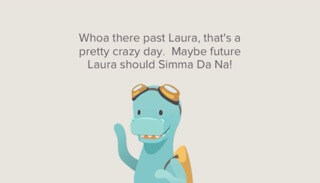A big reason the holidays are so special to me is because the memories that surround them.
Holiday lights, Christmas carols, seasonal decorations–they all make the little girl in me giddy, and I can’t help being increasingly excited as the big day draws near.
Christmas Day itself isn’t the same kind of day it was when I was young, but that doesn’t matter.
The memories and traditions that surround it still create that same special feelings throughout the entire holiday season.
Why do these memories mean so much to us?
What causes these holiday triggers to make it the most wonderful times of the year and leave us all running around wishing each other good tidings of comfort and joy?
A wonderful little sentimentality called nostalgia.
Timehop, Nostalgia, and the Customer Experience
Not only has nostalgia been shown to help counteract loneliness, boredom, and anxiety—it’s also a very powerful force in marketing and advertising.
Defined as “a sentimental yearning for the happiness of a former place or time,” nostalgia can be evoked through any and all five senses.
It’s why people buy candles that smell like baked goods and watch old TV shows and movies.
With this in mind, it’s no surprise nostalgia can encourage buying decisions or motivate consumers to further engage with your brand.
When you align yourself with the memory of a happier time and place, you breed an instant feeling of familiarity and trust with your consumers.
Nostalgia marketing offers consumers a piece of that happy memory in their present day life.
A great case study for this is the Timehop app.
I started using Timehop while it was still in beta, and it has continued to be one of my favorite daily rituals.
For those of you who aren’t familiar, Timehop is an app that sends you a daily recap of what you posted on all of your connected social networks (Facebook, Twitter, Instagram, Foursquare, and now Pinterest and Flickr) on that same day during the past several years.
It is a fun and interesting way to look back, laugh at yourself (which happens often in my case), remember the good and the bad moments (and what you learned from both), and really just see how far you’ve come in a year.
In a world where time seems to fly, it’s a great way to take a moment each day to reflect on where you were, where you are, and where you want to be on this day next year.
Timehop Builds Community around Nostalgia
Each day when you get your recap email, you are given options to share the different events from that day throughout the years on your social channels or email—further spreading the nostalgia and building community.
One of the most powerful aspects of nostalgic memories is the community built around these shared experiences.
Hence, when you see an update that reminds you of a great night out with friends, or a funny or poignant memory—you share it with those involved.
Likewise if you interact with a brand that in someway triggers a nostalgic feeling, you’ll also share with others.
And not only that you’ll form community with new people—strangers—through the bond of the memory.
The Science of Nostalgia
Scientists have found that nostalgic memories can normally be categorized into two types: Social interactions and historical events.
Timehop weaves in both of these magnificently. With an ever increasing digital blueprint of our lives, it is increasingly becoming easier for any brand or organization to do the same.
As with all messaging, it is very important to thoroughly understand your target market prior to using nostalgia in any of your communications campaigns.
A few things to keep in mind:
- Age: If you are trying to reach 20-year-olds, you will need to evoke very different memories than if you are targeting 60-year-olds. Age is extremely important when deciding context for nostalgic mentions.
- Goal: Look at the overall goal of the communication and the emotions you most want to trigger. Ask yourself why? Why will this piece of nostalgia– this emotion—be productive for your goals. The use of nostalgia should be purposeful and inline with your overall communications strategy.
- Present day context: Timing is everything. Please think about current events and the how they affect the filter through which your consumer might view a nostalgic event or interaction.
Need some inspiration on how you weave nostalgia into your campaigns? Check out some of these fun examples for inspiration. Happy memories!
